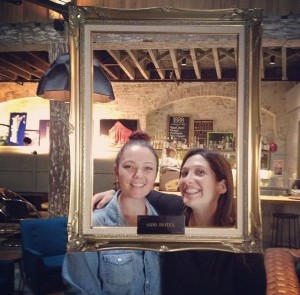I’ll admit it. Selfies aren’t my favorite thing in the world. Plus we all have that one friend, right? The one who over shares a selfie every day that looks similar to the one shared yesterday. And yet, I recently came upon an interesting discovery in Instagram.
While thumbing through my feed past the steady influx of kids, dogs, selfies, foodie pics (and we think selfies are the problem??), I accidentally hit the far right tab taking me to my profile where I looked at my own feed in aggregate. Almost every third photo was a selfie or in some cases a “groupie” of me and my kids. That was when I realized that I too had the affliction.
Hello, my name is Nick and apparently I am addicted to selfies. And guess what? Selfies still annoy me. Sometimes.
I’m not trying to be be clever or contradictory. Rather, I have come to recognize and appreciate why selfies matter. And I’m not talking about why they matter for an individual’s self confidence. I’m not talking about that at all, actually (plus I’m not 100% sold on that theory).
We talk about brands here and the fact of the matter is that selfies matter for brands, too. If properly planned and executed, a selfie campaign can provide a conduit for connecting the digital and non-digital components of your brand experience.
How Brands Are Encouraging Selfies

#1888hotel
When speaking about the future of social media at a travel industry event in Germany last month, I told the story of the 1888 Hotel in Sydney, which is known as “the world’s first Instagram hotel.” Beyond just being a clever marketing monicker, the 1888 Hotel walks the talk. They have Instagram tours of the city and walls adorned with Instagram pics visitors have taken. And in the middle of the lobby hangs a gilded frame designed for — you guessed it — selfies!
In looking ahead, “the future” for many is when we’re less defined by the silos and labels of social media and digital marketing, and instead put more time into creating a holistic brand experience. This experience will be heavily driven by what we’re doing offline and online simultaneously. Which brings us back to selfies. The adventures people get into in downtown Sydney promote the area but the selfie they take at the hotel is the brand touch point that grounds the entire experience with the 1888.
Other brands are employing creative selfie strategies as well. American Eagle Outfitters asks customers trying on clothes to share their shopping experiences online through selfies tagged #AEO. Bringing this conversation full circle, AEO features select selfies in store and on signage. Secondhand retailer Ragstock similarly entices customers to share selfies with a chance at winning a prize.

#ReachHigher
You don’t have to be in brick-and-mortar retail environments to make selfies work for you. Home try-on mainstays Warby Parker and Stitch Fix encourage their communities to share what they’re trying on at home. Stitch Fix incentivizes the act by offering customers a chance at winning a $50 gift certificate if they participate in #StitchFixFriday.
Even the White House is getting in on the selfie action. Their Reach Higher campaign is designed to get young people excited about pursuing education after high school. To show their support and to build the movement, Michelle Obama asked people to take a selfie in apparel from their favorite institution of higher learning using the hashtag #ReachHigher.
Hey, even Merriam-Webster recognized the impact of selfies by adding the word to the dictionary this year.
Why Your Picture Is Worth a Thousand Words
Why do all of these brands care so much about selfies? Is it to help people feed their egos or brag? No. (Okay, maybe a little.) The best selfies (and groupies) tell stories. The best brands tell stories as well. Coincidentally, the best stories involve others and aren’t ME-focused. That’s why customer stories, testimonials, and word of mouth have long been among marketers most effective tools.

#StitchFixFriday
However, these customer stories were never easy to get. It was a big ask. Can you tell us a story about you and our product? Can we use this story and your name in our marketing materials? Do you mind filling out this legal release? Yuck. Testimonials and stories are valuable resources but have always been hard to mine out of the solid rock they’re buried in.
Until now. Social media made this a little easier by fostering conversations and user-generated content. Selfies not only reduce the friction further, they also make the act of sharing customer stories fun.
Like any form of direct-response marketing, for best results, you need to provide clear instructions on what you want your customers to do. No one will know what to post or which hashtag to use unless you tell them. Remember to keep it simple. An obvious hashtag that’s clearly promoted and a selfie that’s easy enough to accomplish without a lot of planning. After all, they’re helping you out. Try not to make them put on special clothes and shoot a jump-shot with a blindfold on.
Beyond being an instrument of ego and occasional annoyance, the selfie can actually be a powerful piece of digital currency, connecting our offline and online brand experiences through quick, easy, and fun content.
What do you think? What’s your opinion of selfies? We’d love to learn your take in the comments below.

